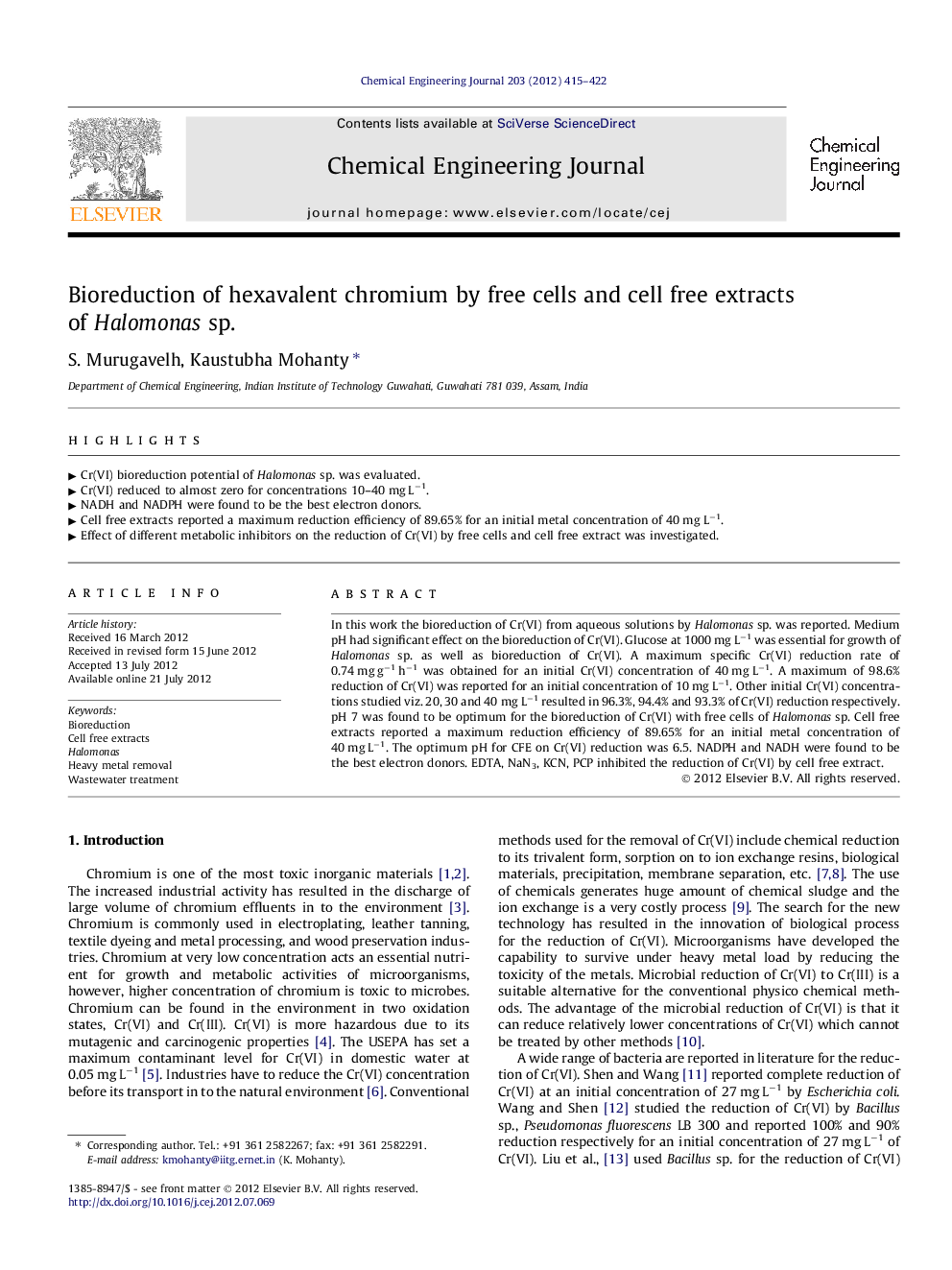| Article ID | Journal | Published Year | Pages | File Type |
|---|---|---|---|---|
| 149297 | Chemical Engineering Journal | 2012 | 8 Pages |
In this work the bioreduction of Cr(VI) from aqueous solutions by Halomonas sp. was reported. Medium pH had significant effect on the bioreduction of Cr(VI). Glucose at 1000 mg L−1 was essential for growth of Halomonas sp. as well as bioreduction of Cr(VI). A maximum specific Cr(VI) reduction rate of 0.74 mg g−1 h−1 was obtained for an initial Cr(VI) concentration of 40 mg L−1. A maximum of 98.6% reduction of Cr(VI) was reported for an initial concentration of 10 mg L−1. Other initial Cr(VI) concentrations studied viz. 20, 30 and 40 mg L−1 resulted in 96.3%, 94.4% and 93.3% of Cr(VI) reduction respectively. pH 7 was found to be optimum for the bioreduction of Cr(VI) with free cells of Halomonas sp. Cell free extracts reported a maximum reduction efficiency of 89.65% for an initial metal concentration of 40 mg L−1. The optimum pH for CFE on Cr(VI) reduction was 6.5. NADPH and NADH were found to be the best electron donors. EDTA, NaN3, KCN, PCP inhibited the reduction of Cr(VI) by cell free extract.
► Cr(VI) bioreduction potential of Halomonas sp. was evaluated. ► Cr(VI) reduced to almost zero for concentrations 10–40 mg L−1. ► NADH and NADPH were found to be the best electron donors. ► Cell free extracts reported a maximum reduction efficiency of 89.65% for an initial metal concentration of 40 mg L−1. ► Effect of different metabolic inhibitors on the reduction of Cr(VI) by free cells and cell free extract was investigated.
